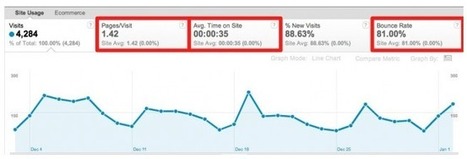From the original article: "One argument you hear all the time is that Google can’t possibly use something like bounce rate as a ranking signal, because bounce rate is very site-dependent and unreliable by itself. I hear it so often that I wanted to take a moment to say that I don’t buy this argument, for one simple reason.
ANY ranking signal, by itself, is unreliable.
I don’t know a single SEO who would argue that TITLE tags don’t matter, for example, and yet TITLE tags are incredibly easy to manipulate. On-page factors in general can be spammed – that’s why Google added links to the mix. Links can be spammed – that’s why they’re adding social metrics and user metrics..."
What really counts is:
a) Do people click on your site inside the SERPs?
b) How long people dweel on your site before returning to the search engine result page?
"Where these 2 metrics really shine is as a duo.
CTR by itself can easily be manipulated – you can drive up clicks with misleading titles and META descriptions that have little relevance to your landing page.
That kind of manipulation will naturally lead to low dwell time, though. If you artificially drive up CTR and then your site doesn’t fulfill the promise of the snippet, people will go back to the SERPs.
The combo of CTR and dwell time is much more powerful and, with just 2 metrics, removes a lot of quality issues.
If you have both high CTR and high dwell time, you’re almost always going to have a quality, relevant result."
Recommended. 9/10
Full article: http://www.seomoz.org/blog/the-2-user-metrics-that-matter-for-seo



 Your new post is loading...
Your new post is loading...









